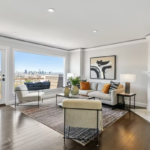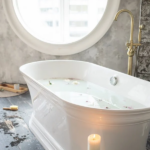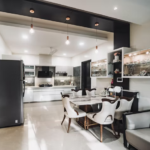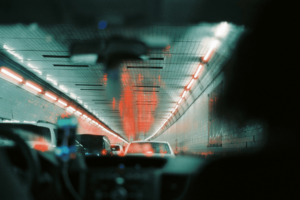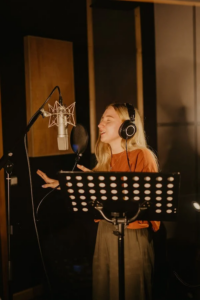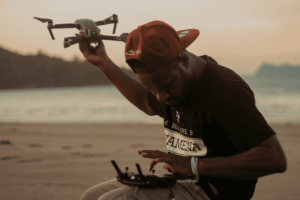Real estate photography is always in the news, with houses going on and off the market regularly. Additionally, with the best real estate photos, every agent is vying for the attention of homebuyers.

Professional real estate photography appears to be hard in the beginning. However, following these basic real estate photography techniques will take amazing and consistent photographs. In addition, your local real estate agents will get in touch with you due to these.
What is Real Estate Photography?
Some of you may be surprised to learn about real estate photography. Why would somebody photograph a house?
However, there is a need for photography in the real estate industry. Particularly now that more people are buying and selling homes. Although taking photographs of houses may appear to be a simple task, it does necessitate some talent.

Is it profitable to photograph real estate? It will never be as popular as landscape or portrait photography because it is a specialty field. However, compared to other photography businesses, this means you have a better possibility of attracting more clients and earning more money.
So, how much does it cost to hire a real estate photographer? It all depends on a few variables, just like any other photography.
The location and size of the house are essential factors in determining the price of real estate photography. In addition, of course, your prior experience is necessary. If you’re just getting started, it is a good idea to price a little less than your more experienced competition.
For properties under 3,000 square feet, most real estate photographers charge around $200 or less. However, they could charge between $250 and $500 for larger homes.
If you live in a location where real estate is in high demand, this could be the ideal photographic job for you.
What is Real Estate Photography?
Equipment Required for Real Estate Photography
Real estate photography does not necessitate a lot of gear. Let’s look at the list below to see what you already have and what you will need to get.
Camera
You will require a camera that can shoot manually for real estate photography. Any DSLR or mirrorless camera with a crop or full-frame sensor would suit the purpose.

Lens
You can use a wide-angle lens to photograph tight angles and spaces. Its unusual optics also have the effect of making rooms look more prominent. The NIKKOR 16-35mm for Nikon and the EF 17-40mm f/4L for Canon are your best options at hand.

Consider investing in a tilt-shift lens to improve your photography if you have the funds. This option is ideal for real estate photography because it avoids the distortion caused by a wide-angle lens. Unfortunately, it is usually more costly than its ordinary counterparts. However, you can always buy one used for a lower price.

Tripod
When you must photograph lengthy exposures, a tripod comes in handy. It stabilizes your camera and guarantees that motion blur is avoided. It also assists in the preservation of perspective in your photos. All of your images will be the same height if you set them up at the height of five feet. Keep in mind that consistency is crucial for real estate photography.

Remote Trigger
It is preferable not to handle the camera if you are shooting with a slow shutter speed. Even the act of pressing the shutter to capture a picture might cause unwanted camera wobble. Hence, remote triggers are the best options during such scenarios.

Flash
In real estate photography, flashes or strobes are the most important but sometimes underestimated devices. They are helpful, especially when photographing in low-light situations.
Monolights and flashguns are the two primary forms of flashes. Because flashguns are inexpensive, you can begin with them. Monolights, on the other hand, are the most incredible option for photographing bigger properties because they have a greater light output.

Flash Trigger
A flash trigger is required when using an off-camera flash for photography. The transmitter is connected to your camera’s hot shoe, while the receivers are connected to the flash units.
Some strobes already have built-in receivers, which is worth noting. Simply click the shutter button after you have finished connecting all of them, and the flash should go off at the same time.

Light Modifiers
Bare flash frequently produces undesirable effects. To soften the light they generate, all you have to do is point them toward the ceiling most of the time.
What if the ceiling is too high or there is not enough bounce light?
Then you should think about employing light modifiers. Shooting umbrellas is usually enough to get the job done. They are compact, light, and easy to transport. They also do not get in the way, which is essential while photographing in tight situations.

Light Stands
Of course, you will require light stands to support your flash units. A standard light stand can often keep lightweight flash heads. However, more solid C-stands may be needed for the larger mono lights. To light up an area, you may need one to four of these, depending on where you are shooting.
All you need to get started with real estate photography is a camera, a lens, and a tripod. All of the other factors we listed will assist you in achieving more significant results and completing tasks more quickly. You do not have to get all of these tools at once, though.

Things to Remember Before Shooting Real Estate Photography
Have a Standardized Shot List for Each Property
While no two properties are the same, there are some photos that every real estate photographer should include in their portfolio.
- Knowing what to cover is crucial for learning how to photograph real estate.
- Each bedroom, the kitchen, and the living room are shown in two wide-angle shots.
- Unless the restroom is really lovely or huge, only take one photo of it.
- Unless the backyard has any special features, take 1-3 photographs of it. Then a couple of images of the front of the house to demonstrate the ‘curb appeal.’
- Each feature, such as the laundry room, garage, and pantry, gets one picture.

This list will ensure that you have a reference point for all of your essential real estate images.
You can also provide the real estate agent with your list. They will know what to expect from your shoot at that point.
Preparation
When it comes to real estate photography, preparation is always essential. Nothing is more frustrating than being on set and discovering that something is not working. You might be well-informed enough to continue. However, if a couple of objects fail, you will have to work a little harder on your feet.
Always remember to bring your charger. A dead battery is a shot in the dark. If you have a second camera, get it as well. Charge all batteries, format your memory card, and prepare your backpack as part of your photography gear preparation.

Ensure you have allotted adequate time for the drive-by to look up the address. If you have backup equipment, make sure to bring it with you.
Unless there are unique features or huge bathrooms, they usually require one photo for a property listing.

Enquire about Insurance
When photographing in a stranger’s home, you must always consider the possibility of damaging or breaking something during the shooting. Personal belongings can be valuable in terms of money or sentimental worth. Furthermore, if you accidentally damage any of the house’s fittings or other items, this can cause problems for the owners seeking to sell or rent their homes. You’re in big trouble if the homeowner decides to sue. Accidents can happen no matter how attentive you are, so you must take precautions to protect yourself. Insurance is the best method to achieve this for real estate photographers.
What to Do at the Property for Real Estate Photography?
Declutter
One of the most crucial real estate photography techniques is decluttering. It would help if you made friends with the real estate agent who works with the homeowners.
We become accustomed to bits of clutter accumulating over time in our own homes. However, all of the minute details that we overlook will stand out in a photograph. Ensure that surfaces such as counters, coffee tables, and desks are kept clean as possible. Leave 1-3 ornamental things if you desire them.

If you are photographing interiors, only photograph closets that are large or customized. A cabinet is ideal for storing small items until the shooting is finished most of the time.
Explore the Home
Every house is unique. Before taking up the camera, get a sense of the space. This will help you decide how you want to photograph it.
You will start making mental notes on the ideal angles and what minor items you might need to relocate. This also allows you to request that the homeowner moves particular objects. It also informs you of which spaces are available for your use and which rooms might require a few more minutes of cleaning.

Knowing this can help you choose which sequence you should begin capturing real estate images. If you have trouble remembering things, acquire a notepad and take notes. It would be easier for you to organize the rooms before photographing them.
Lights On or Off
There are pros and cons to having the lights on or off for real estate photography. Quickly turning on the lights makes an area feel warmer and more welcome. However, it introduces a range of color temperatures. When post-processing, you will need to change the white balance.
Turning off the lights creates a uniform light temperature. However, it frequently gives off a frigid vibe in real estate images. If the house has a lot of windows, consider opening them to let more light inside. In most cases, natural light is the best option.

But what if there are not enough windows or the lighting is inadequate? Then you can turn on the interior lights or use external flash devices.
If you discover that the color temperatures of the light bulbs in your home are varied, turn them off and use flash instead. Unfortunately, warm incandescent and cool fluorescent lamps do not combine well when it comes to real estate photography.
Of course, you can use a desk lamp for impact as long as the illumination is not too harsh. Whatever decision you make, stick to it throughout the house.
Use Flash and Bounce for Diffusion
Agents and homeowners are frequently pressed for time to get the listing up and available to potential purchasers. However, budgets do not often allow for a lot of photographic time for a single listing. So, one approach to help you go from one location to another faster is to use a flash unit mounted to your camera.
If you are going to use a flash on your camera, make sure to bounce the light off the walls to soften the light. We obtain a dreaded bright spot in the center if we focus the camera flash squarely on the room’s spaciousness. Then there is a brief drop to create a shadow around it. It is also called vignetting, and it is not suitable for real estate photos.

Set the flash to bounce off a back wall, the ceiling directly above you, or even one of the side walls. This allows the light to disperse into the room, giving it a more even appearance. Light diffusers can also be attached to your light source.
Install your flash units on your light stands for larger venues. Place them outside of the frame, angled upwards toward the ceiling. Finally, the placement of your lights is determined by the room’s size and shape. Your strobes can usually be placed on the corners or even behind you. If those locations do not work, you will have to experiment with additional regions until the room is evenly lit.
Shoot Straight to Avoid Distortion
If you move the camera slightly up or down, you will see that the vertical lines begin to slant. They will either distort one way or the other. For real estate photography, a height of roughly 5 feet is perfect (152.5 cm). Each residence is unique. However, this is the overall height that will appear natural and balanced.

If you go too high up, you will see that there is a lot of ceiling and not enough living space. Likewise, you will see too many furnishings and not enough room if you lower the shot too low.
Use Lens Correction to Correct Distortion
Distortion is one of the drawbacks of utilizing wide-angle lenses in real estate photography. Everything appears to be twisted while using this style of optics. Before applying a lens correction, make sure you adjust your verticals. These two options will give the shot a more professional appearance.
The Lens Correction module is located in the Detail Module. Kindly check ‘Enable Profile Corrections.’ Make sure the lens you used is the one that appears in the Lens Profile pull-down option.
Then proceed to the Transform Module. First, select the ‘Constrain Crop’ checkbox. Then, on the word ‘Auto,’ click. When you click Auto, the box will darken, indicating that it has been applied. Double-check that all of the lines have been corrected. If not, you can make manual adjustments using the sliders in that module.
Modify the Basic Adjustments
Lowering highlights, lightening shadows, deepening blacks, and increasing clarity are the key tweaks I do.

Developing your style and workflow will take some time. So go ahead and try out some new real estate photography techniques. You might just have the correct Lightroom preset for every photo after some time.
Correct Different Light Temperatures
When it comes to real estate photography, getting the colors right is crucial. You will get some yellow tones if you leave lights on within the rooms. When compared to the bluer sunshine, these will appear significantly different.
It is always ideal to use Lightroom or Photoshop to balance out these light temps as much as possible. The shot will appear more polished and professional as a result. This is when the Adjustment Brush comes in handy. Select a brush and change the light temperature to blue for a warmer effect.

Carry on in this manner until it appears neutral and blends in with the surroundings. Next, increase the brush size, feathering, and brush strength using the Adjustment Brush. This procedure will result in a gentler mix.
You can also use a color checker or a gray card to equalize the light temperatures in-camera. All you have to do is place the card in front of the scene you are about to shoot and take a shot of it. Then, open White Balance after loading your real estate photographs into Photoshop. Finally, click the gray on the card with the eyedropper tool, and PS will automatically alter the colors for you.
Every shoot should include white balance and color correction as it shows your clients that your photography is professional and consistent.
What is Real Estate Drone Photography?
Aside from real estate photography, video can be a very lucrative option for those interested in pursuing a career in real estate photography.
Real estate drone photography may help a home stand out from the crowd online by creating dramatic, eye-catching graphics. You can use drone cameras to create a virtual tour of a house, traveling through each room so that an online viewer can get a sense of the place.

Drones can offer sweeping landscape views and showcase a large property. However, they will not replace your trusty DSLR camera for interior images—traditional real estate photography is still your best bet.
If you want to include real estate drone photography in your portfolio, consider that drones can be expensive, starting at around $1000 and rising from there.
Other obstacles to becoming a drone operator exist as well. Even before you start getting paid for your services in the United States, you will need to secure an operator’s certificate to use a drone for real estate photography. It will also take time to learn how to control the drone, so connecting with a real estate drone photography professional when you first start is a good idea.

Drone photography will also take longer and cost more than traditional real estate photography. Prepare to shoot extensive video segments and then edit them into more digestible shots in post-production. A 3-axis gimbal will keep your camera in place as your drone flies about, allowing you to record high-quality footage. More control over your real estate’s drone photography, such as zooming and panning, is now possible.
Real estate drone photography is more weather-dependent. Take additional images of the viewpoints you require, just if the first one fails. To avoid wind gusts, you should shoot your real estate drone photos on a windless day and keep them near the ground.
Your drone should be equipped with flight control software that enables you to schedule your flight ahead of time rather than making decisions on the fly. Avoid items like cables and trees, which can cause your drone to crash and cost you a lot of money.
You will also need a specific drone-operating contract in addition to a typical property photography contract, as there are additional legal obligations for drone operators

How to Determine Real Estate Photography Pricing?
Choose an online portfolio website that offers gorgeous templates to ensure that your real estate photography website makes a powerful, fashionable impression. Are you looking for another excellent characteristic? Thanks to a built-in internet store, clients may purchase your real estate photography packages right away.
As a professional photographer, you must think about and account for the charges that allow you to edit images. This could include camera equipment, insurance, editing software, experience, transportation, and marketing.
Real estate photography costs vary depending on area and skill, but you can follow some general guidelines:
Size
The bigger the house, the more rooms, and features you will need to capture and edit. It only makes sense that you charge based on your shooting property.

You might charge under $200 for homes 3,000 square feet and under and over $200 for 3,000 square feet and up.
Time of the Day
It can be challenging to schedule shooting times with the homeowners and real estate agents, so you may be assigned to photograph during odd hours.
Shooting high-quality real estate photography after sunset or in the dark requires more equipment and editing than daytime sessions, so be sure you have all the specifics before giving your client your final price.
Higher-End Listing Means Higher Rates
Assume you photograph a home that will sell for more than $1 million. In that situation, your real estate photography pricing should reflect that—depending on the worth of the real estate listing, your fees could range from roughly $200 to closer to $500.
Some people base their real estate photography charges on square footage, utilizing a nine-cent-per-square-foot pricing model.

You can charge more for real estate drone photography than stock photography, with a minute of professional footage costing anywhere from $200 to $400.
The cost of video tours of interiors and individual rooms should be in the $1,000 range. When determining your real estate photography pricing, focus on deliverables rather than an hourly wage and factor in the time your efforts will take.
Post Processing in Real Estate Photography
The importance of post-production in digital photography cannot be overstated. This is especially true in real estate photography when your goal is to make the property look as lovely as possible to sell it as quickly as possible. However, post-production and editing should never be utilized deceptively or hide flaws. Instead, use them to provide the most outstanding possible viewing experience for potential purchasers, showcase the property’s qualities, and provide viewers with as thorough a tour as possible without visiting the location.

Aside from color correction and other standard processes, combining photographs is a popular method in real estate photography.
Image Blending
This approach is applied to give your client varied shots of the property. The goal is always to give the customer a thorough and accurate picture of the property, never deceive or fool them.

Glare
Two exposures are required in circumstances where a floor creates glare. Set one photo for the room’s best direction and another for the floor. These two photographs can be blended in the editing process for a great result. A tripod will come in handy in this circumstance. When you need to shoot two exact positions, your tripod is your best friend.

Flambient
The combination of flash and ambient light is Flambient (also known as “A Kiss of Flash”). The basic principle is shooting an ambient exposed image and then a flash image. The flash bounces off the wall or ceiling for these purposes. Next, the two photographs are blended in Photoshop to make the perfect image. This method allows for changes in contrast and color. Again, the most remarkable results are obtained by utilizing a tripod.
High Dynamic Range
HDR real estate photography is exceptionally beneficial for novices since it may simply handle the problem of varying exposure ranges in a shot. HDR is a photography method that reproduces a dynamic brightness range. HDR captures multiple exposures of an image and then blends them for rich, vibrant shades and a highly polished finish. A tripod is required for HDR photography.

How to Promote Real Estate Photography?
Setting up an excellent internet photographic portfolio is the best method to promote your real estate photography business. Prospective clients will be able to see all of your real estate images and drone photography in one place, along with your real estate photography pricing page.
A portfolio website is an essential tool for showcasing your reputation and skill as a photographer.
Furthermore, a well-designed website can be used as a marketing tool to attract new customers. For example, when customers conduct searches for local real estate photography services, search engine optimization (SEO) is a critical component in helping to boost your web page’s visibility.
If you do not already have one, now is the time to get one. No problem—just use a website builder to make one in a matter of minutes. Choose an online portfolio website that offers gorgeous templates to ensure that your real estate photography website makes a powerful, fashionable impression. Are you looking for another excellent characteristic? Thanks to a built-in internet store, clients may purchase your real estate photography packages right away.
Conclusion
Maintain consistency in your method and appearance if you want to make real estate photography a consistent source of revenue or if you want to be a professional photographer in this sector.
Also, when you are first starting, do not get too caught up in the equipment. Beautiful real estate photography does not necessitate a large budget. You will be well on your way to building a complete, consistent portfolio if you follow the real estate photography advice outlined above.
Gallery




